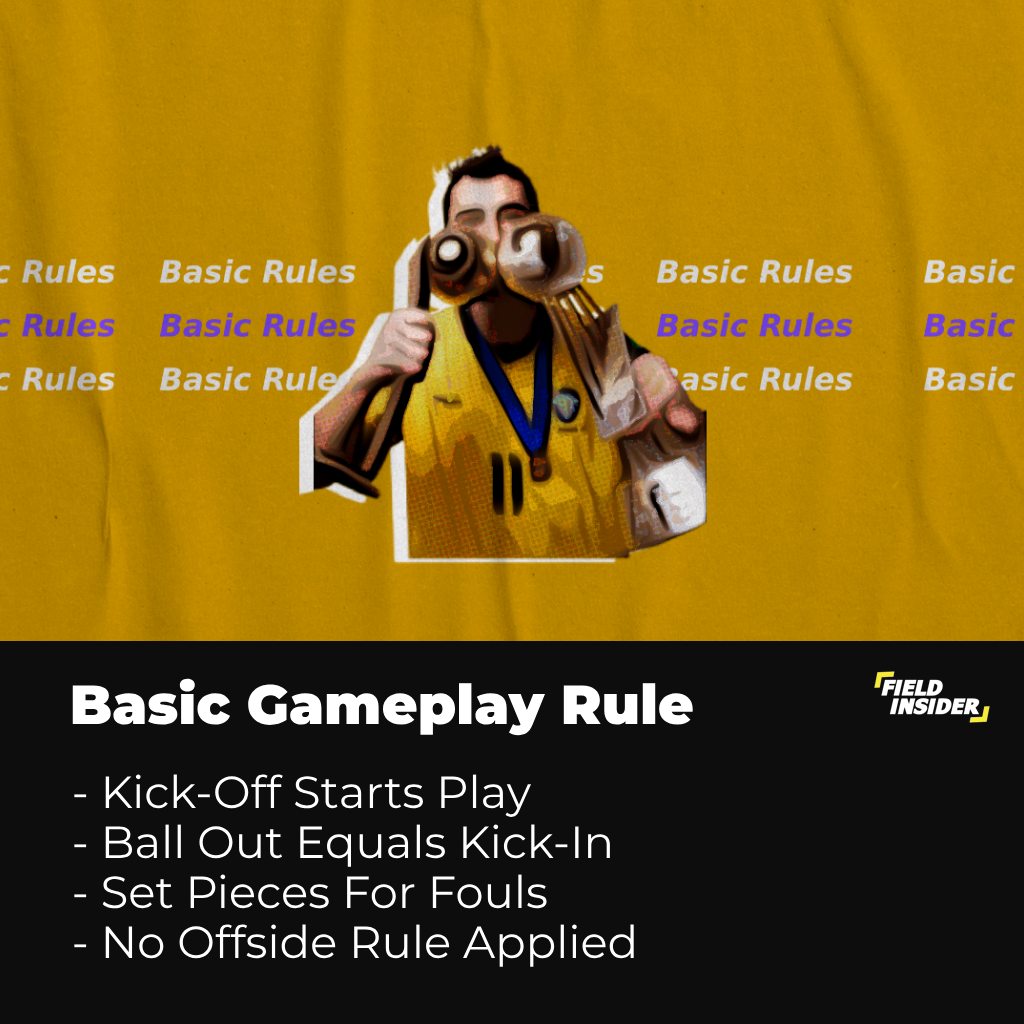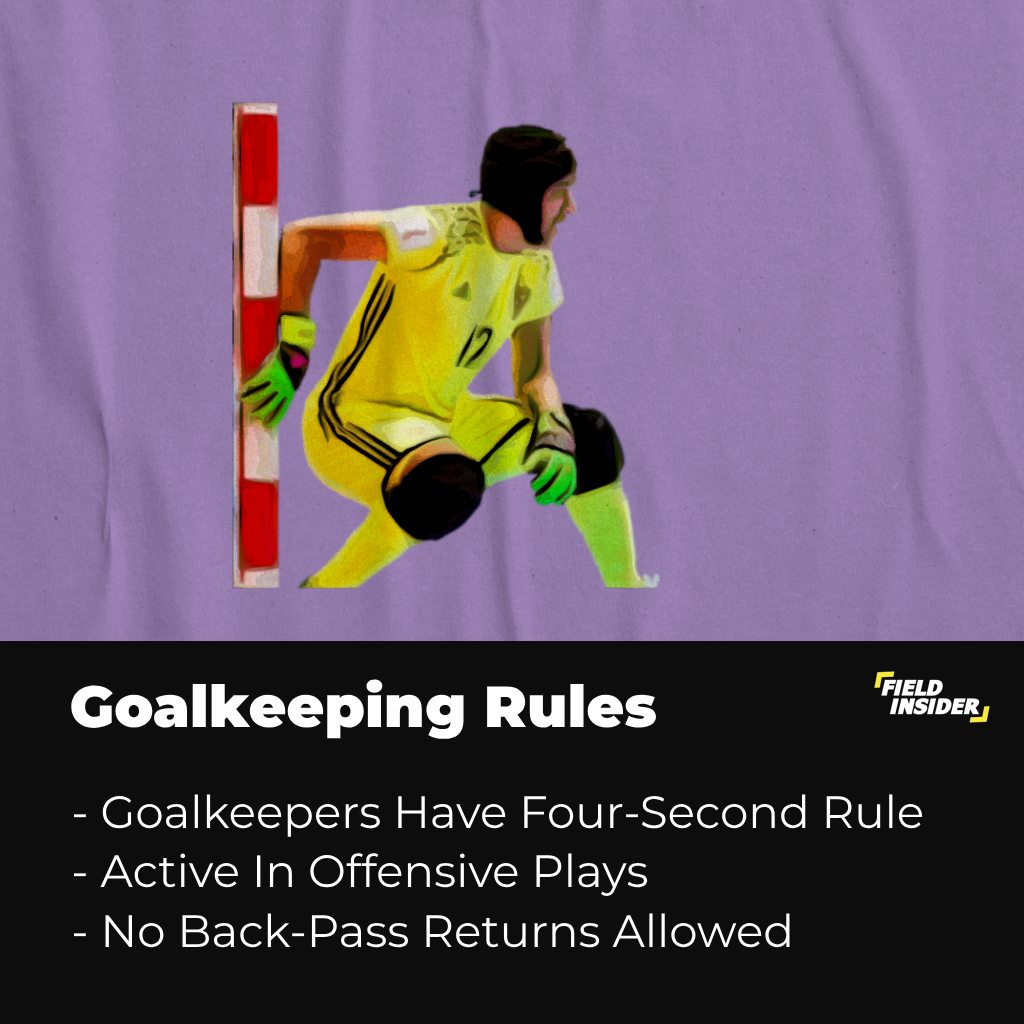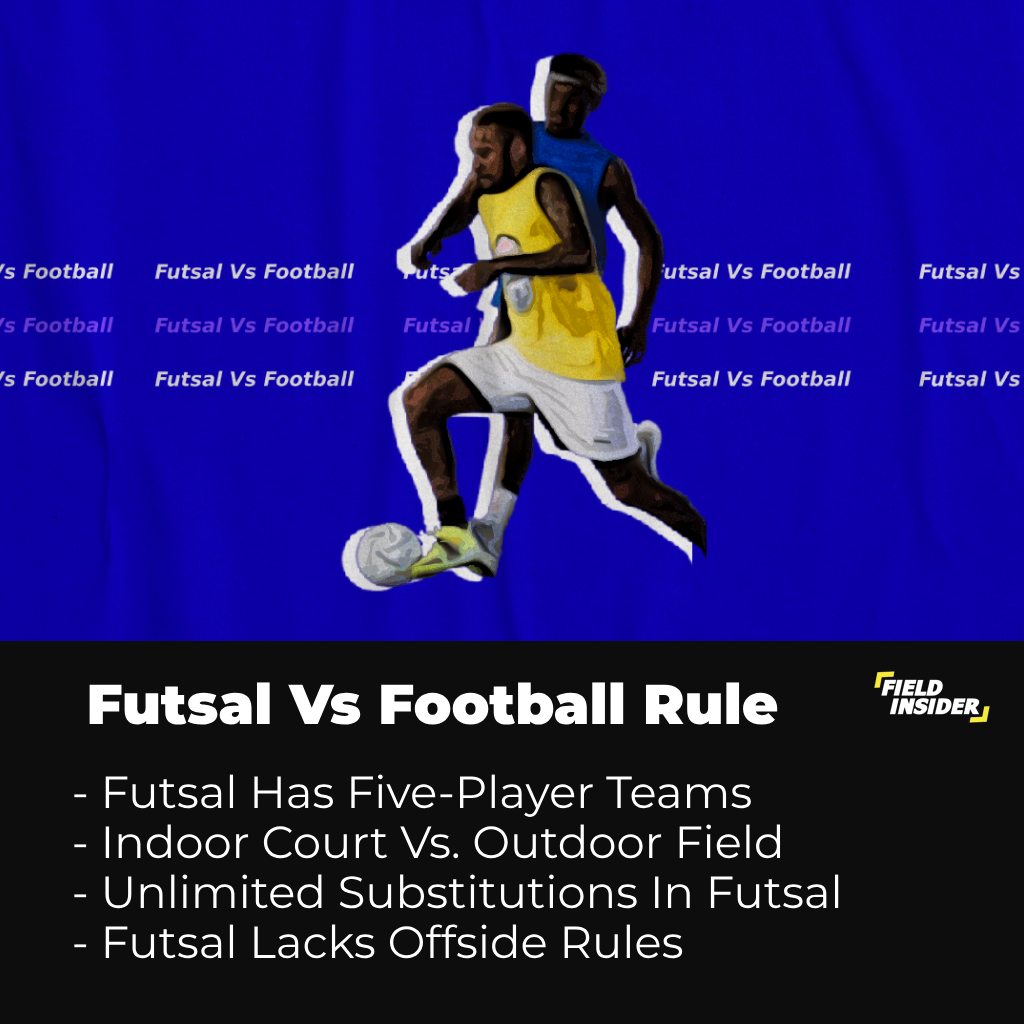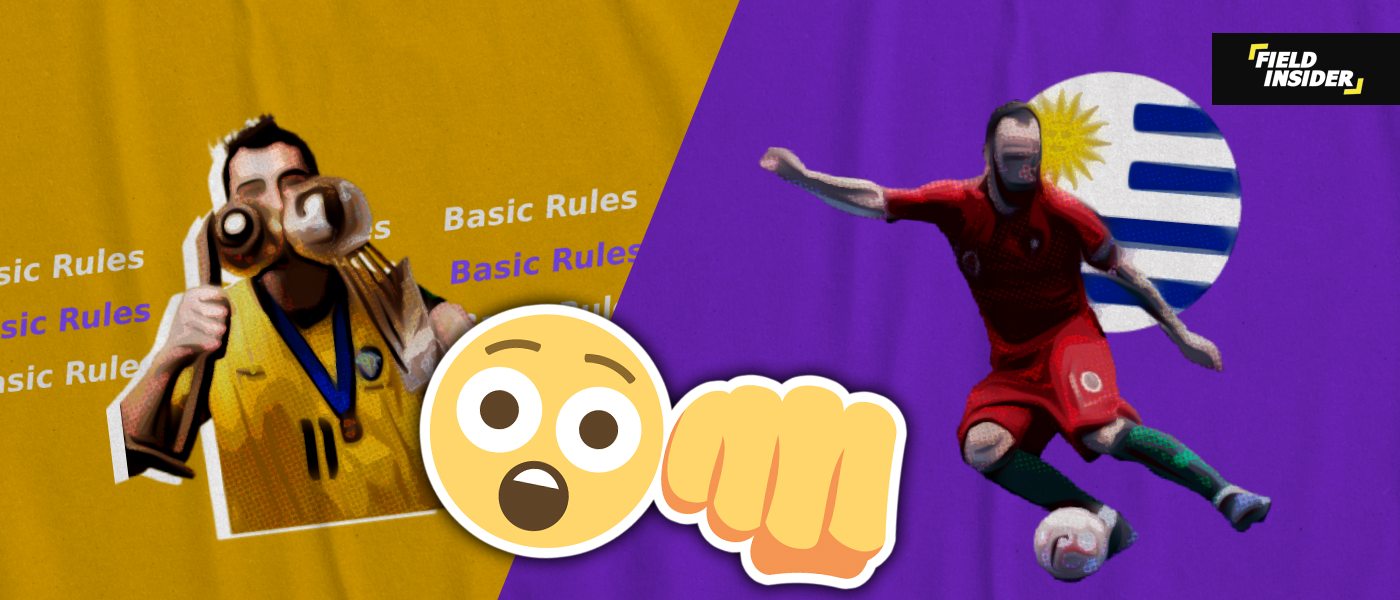What Are The Futsal Rules? A Complete Guide
Futsal, known for its distinctive style and unique set of rules, stands out as a fast-paced and thrilling variant of soccer. This indoor sport, which emphasizes skill, agility, and tactical intelligence, has grown immensely popular worldwide.
Understanding futsal rules is crucial for players, coaches, and enthusiasts alike, as it forms the foundation of the game’s integrity and excitement. In this comprehensive guide, we delve into the intricacies of futsal rules, exploring everything that define this dynamic sport.
Key Takeaways
| Aspect | Details |
|---|---|
| Origin of Futsal | Evolved from street soccer in South America. |
| Futsal Court and Equipment | Smaller than a soccer field, specific ball type. |
| Team Composition | 5 players per side, including a goalkeeper. |
| Gameplay Rules | Emphasizes ball control and passing in tight spaces. |
| Scoring and Timing | Similar to soccer, but with a shorter match duration. |
| Fouls and Misconduct | Stricter rules on physical contact, yellow and red cards. |
| Substitutions | Unlimited and on-the-fly. |
| Goalkeeper Rules | Can’t touch the ball again if it’s passed back directly. |
| Officials | Enforce rules, ensure fair play. |
| Penalties and Shootouts | Used in tie situations, specific futsal rules apply. |
| Strategies and Tips | Focus on teamwork and skill development. |
History of futsal

Early Beginnings in South America
Futsal traces its roots back to the 1930s in Uruguay, emerging as an adaptation of soccer suitable for the confined urban spaces of South America. This innovative format was a response to the lack of large soccer fields, fostering a style of play that emphasized skill and agility over physicality.
This period was a pivotal one in soccer history, resonating with stories of football legends and the evolution of the sport in articles such as why Brazilian footballers are so good, highlighting the region’s profound influence on soccer.
Spread Across Continents
After its inception in Uruguay, futsal quickly spread to other South American countries and beyond. This expansion was not just geographic but also cultural, influencing the style and skills of players in different regions.
Futsal’s adaptability to various environments made it a popular choice in countries with limited access to large soccer fields.
Institutional Recognition and Growth
The rising popularity of futsal eventually led to its formal recognition by international sporting bodies. This official acknowledgment in the 1960s marked a transition from informal street games to organized, competitive matches.
With standardized rules and formal competitions, futsal established itself as a serious sport, paralleling developments in soccer variants as noted in 9-a-side football rules. The sport’s inclusion in major tournaments, such as the FIFA Futsal World Cup, further solidified its status on the global sports stage.
Futsal Today: A Global Phenomenon
Today, futsal is not just a training ground for soccer but a globally recognized sport in its own right. It continues to grow in popularity, with professional leagues and amateur competitions worldwide.
The sport’s global reach and the diverse strategies it employs are reflected in articles like best futsal formations, showcasing the game’s adaptability and enduring appeal.
Futsal Court and Equipment

Dimensions and Markings of a Futsal Court
The futsal court, distinctly smaller than a traditional soccer field, measures between 25 to 42 meters in length and 16 to 25 meters in width. This size fosters a faster-paced and more skill-oriented game.
The markings on the court, including the penalty area, goal area, and halfway line, are crucial for game regulations. The design and dimensions of the court play a significant role in the gameplay, similar to how field sizes impact strategies in other variants, as explored in 7-a-side vs 11-a-side.
Essential Equipment for Playing Futsal
The primary equipment in futsal includes a smaller, less bouncy ball compared to a regular soccer ball, designed specifically for indoor play. This ball is a key factor in the game’s emphasis on control and precision.
Players also require appropriate footwear for indoor surfaces, shin guards for protection, and team uniforms. For more on soccer gear and its evolution, interested readers can explore football essentials for kids.
The Goal Post in Futsal
Futsal goals are smaller than in traditional soccer, typically measuring 3 meters in width and 2 meters in height. The reduced goal size complements the smaller playing area, challenging players to be more accurate and strategic in their shots.
Understanding the importance of goal dimensions is crucial, as seen in different sports contexts like goal post dimensions in soccer.
The Teams and Players
Standard Number of Players on a Futsal Team
In futsal, each team consists of five players, one of whom is the goalkeeper. This smaller team size, compared to traditional 11-a-side soccer, allows for a more intensive and skill-focused game.
The reduced number of players on the field also focuses individual talents and teamwork, a concept further explored in 5-a-side positions, highlighting the importance of each player’s role.
Player Positions and Their Roles
The positions in futsal typically include a goalkeeper, defenders, wingers, and a pivot (forward). Each position demands specific skills: defenders focus on blocking attacks, wingers on speed and agility, and the pivot on scoring.
This distribution of roles ensures a dynamic and fluid gameplay. For insights into positioning and roles in similar formats, readers can delve into the intricacies of positions in 7-a-side formations.
Importance of Versatility and Skill Development
The fast-paced nature of futsal often requires players to be versatile, frequently switching roles as the game progresses. This versatility is essential for both attacking and defensive plays.
Players must continuously develop skills like quick thinking, agility, and precision ball control. This emphasis on skill development is akin to training methods in youth soccer, as discussed in benefits of children training soccer.
Basic futsal Rules

Starting the Game
Futsal matches begin with a kick-off, a moment that sets the pace for this dynamic game. Teams must be in their own half of the court, and the opposition must not touch the ball until it has been played.
This rule emphasizes the importance of strategic play right from the start, akin to kickoff strategies in various soccer formations discussed in 4-3-3 formation.
Ball In and Out of Play
In futsal, the ball is considered out of play when it fully crosses the touchlines or goal lines, whether on the ground or in the air. This rule, enforcing tight boundaries, encourages precise ball control and tactical passing.
Understanding these boundaries is as crucial as knowing the football throw-in rules in traditional soccer.
Kick-ins, Corners, and Free-Kicks
When the ball goes out of play, it is reintroduced via kick-ins, rather than throw-ins. Corners are taken when the ball crosses the goal line after last touching a defender.
Free-kicks in futsal, like in soccer, follow fouls committed by players. These set pieces are pivotal in the game’s flow and strategy, requiring teams to have a good understanding of set-piece tactics, similar to what is discussed in set-piece training.
Scoring and Timing
How Goals are Scored in Futsal
Scoring in futsal follows the fundamental principle familiar to all soccer variants – getting the ball into the opponent’s goal. Due to the smaller pitch and goal size, precision and tactical understanding are paramount in futsal.
Players can score goals from anywhere on the pitch in futsal, encouraging a more open and attack-oriented style of play. The emphasis on skillful scoring is also seen in other soccer formats, as analyzed in articles like attacking football positions.
Timing and Structure of Futsal Matches
Futsal matches consist of two equal periods of 20 minutes, with a running clock that stops for dead-ball situations, much like in basketball. This time structure leads to a fast-paced and intense game, putting a premium on fitness and quick decision-making.
The match duration in futsal, though shorter than traditional soccer, demands high levels of concentration and stamina, similar to the physical and strategic demands discussed in how footballers run for 90 minutes.
Foul and Misconduct Rules
Various Fouls in Futsal and Their Consequences
Futsal, despite being a non-contact sport, has its fair share of fouls. These include dangerous plays, obstructing the goalkeeper, and excessive physical contact. Fouls in futsal often result in direct free kicks, and accumulating them can lead to penalty kicks awarded to the opposing team.
This strict approach to fouls is similar to soccer, where understanding and adhering to the rules is crucial for team discipline and strategy, as elaborated in football scenarios.
Futsal Rules for Misconduct: Yellow and Red Cards
Misconduct in futsal is taken seriously, with yellow and red cards issued for more severe infractions. Yellow cards serve as a warning for unsporting behavior, while a red card results in the player’s ejection from the game.
These rules underscore the importance of sportsmanship and fair play, which are central to all sports, including soccer.
Substitutions
Rules and Procedures for Player Substitutions
In futsal, the substitution process is unique and allows for a dynamic game flow. Teams can make unlimited substitutions throughout the match, with players entering and exiting at any point from their designated substitution zone.
This approach contrasts with traditional soccer, where substitutions are limited and often strategic, as discussed in team analysis. The on-the-fly substitution rule in futsal enables teams to maintain intensity and adapt tactics quickly.
Strategic Importance of Substitutions
The unlimited substitution rule in futsal is not just about maintaining energy levels but also about tactical adaptability. Coaches can switch players based on the game’s flow, exploiting matchups or adjusting to the opponent’s tactics.
This strategy is akin to managing player roles and formations in soccer, as seen in the flexibility of systems like the 5-3-2 formation.
Impact on Player Development and Game Dynamics
The substitution policy in futsal also contributes to player development, as it allows more players to participate and experience different game situations. This rule keeps the game fresh and challenging, requiring players to be constantly ready to engage.
The continuous involvement of all team members enhances their ability to adapt and respond to the game’s demands, a concept mirrored in the broader context of soccer training, as outlined in individual football training.
Goalkeeper Rules

Unique Rules and Restrictions for Goalkeepers
In futsal, goalkeepers have a unique set of rules that differentiate their role from outdoor soccer. One of the key rules is the four-second rule: a goalkeeper must play the ball within four seconds of receiving it, promoting a faster pace of play.
Additionally, once the goalkeeper releases the ball, they cannot touch it again in their own half until an opponent or the opposition goalkeeper has touched it.
This rule encourages goalkeepers to be part of the team’s outfield play and prevents time-wasting, similar to the proactive role of a sweeper-keeper in soccer.
Goalkeeper Participation in Offense
Unlike in traditional soccer, futsal goalkeepers often participate in offensive plays. They can throw or kick the ball directly into the opponent’s half, creating scoring opportunities.
This active involvement of the goalkeeper in futsal’s offensive strategy is a fascinating aspect of the game, highlighting the position’s versatility, much like the evolving roles in soccer formations, such as the 4-3-1-2 formation.
Impact on Game Strategy and Skills
The rules governing goalkeepers in futsal have a significant impact on the game’s strategy. Goalkeepers must not only be skilled in shot-stopping but also in quick decision-making, accurate throwing, and even outfield skills.
This multifaceted role enhances the overall skill level required for the position. The development of these skills can be paralleled with the comprehensive training approaches in modern soccer, as seen in how to become a goalkeeper.
Refereeing and Officials
Role of Referees and Officials in Enforcing Futsal Rules
Referees in futsal play a critical role in maintaining the integrity and flow of the game as per the futsal rules. They are responsible for enforcing rules, ensuring fair play, and managing the game’s tempo. Typically, a futsal match is overseen by two referees who collaborate to cover all angles of the play.
This dual-referee system is unique to futsal and ensures that the fast-paced action is adequately monitored. The importance of referees in sports is universally acknowledged, as seen in the critical role they play in soccer matches.
Ensuring Fair Play and Sportsmanship
The referees also uphold the spirit of sportsmanship in futsal. They make crucial decisions regarding fouls, misconduct, and penalties, impacting the game’s outcome.
Their role extends beyond mere rule enforcement to being guardians of fair play, a theme resonant in all levels of competitive sports, from futsal to high-school football.
Impact of Refereeing on Game Dynamics
Effective refereeing in futsal can significantly influence the game’s dynamics. Decisions on fouls, timekeeping, and disciplinary actions contribute to the overall pace and temperament of the match.
Good refereeing promotes a fluid game, minimizing disruptions and allowing the players’ skills to shine through. This aspect of sports is essential in understanding the broader context of game management, as explored in football scenarios.
Penalties and Shootouts
Utilization of Penalties and Shootouts in Futsal Matches
Futsal awards penalties for a variety of reasons, including accumulated fouls and direct infractions within the penalty area. Unlike soccer, where a team accumulates fouls over the course of a half, in futsal, a team that commits six accumulated fouls within a half concedes a penalty kick from the second penalty mark.
This rule adds an extra layer of strategy, as teams must be mindful of their foul count. The significance of penalties can be understood in a broader context, as seen in soccer’s high-stakes scenarios like Champions League matches.
Rules for Taking and Defending Penalties
When taking a penalty in futsal, the player must kick the ball towards the goal with the intention of scoring, without any second touch until the ball touches another player, the goalposts, or goes out of play.
The goalkeeper must stay on the goal line until the ball is kicked. These rules emphasize precision and psychological warfare.
Shootouts in Tie Situations
In certain competitive futsal matches, if the game ends in a tie, a shootout is used to determine the winner. This format involves players taking turns to attempt to score a goal from the second penalty mark, with a one-on-one against the goalkeeper.
Strategies and Tips
Strategic Insights for Playing Futsal
Futsal, with its unique set of rules and fast-paced nature, requires specific strategies for success. Effective ball control, quick passing, and spatial awareness are key components.
Teams often employ strategies like the 3-3-4 formation or 4-4-2 formation adapted to futsal’s dynamics. Understanding and implementing these strategies can make a significant difference in both offensive and defensive plays.
Tips for Enjoying and Excelling in Futsal
To excel in futsal, players should focus on developing skills such as agility, tactical intelligence, and quick decision-making. Practicing in small spaces enhances close ball control and reflexes.
For further skill development, players can refer to training guides like individual football training. Additionally, it’s essential to understand and emphasize the importance of teamwork and communication, as they are crucial for executing effective plays and maintaining a cohesive defense.
The Importance of Teamwork and Skill Development
Teamwork in futsal is pivotal due to the small playing area and the need for quick, coordinated movements. Each player’s role is interconnected, and the success of one is dependent on the team’s collective performance.
Emphasizing skill development, particularly in areas like ball control and passing, is crucial. Players can benefit from exploring tactics used in similar formats, such as 5-a-side attacking strategies and defending in 9-a-side football.
Legends of Futsal and Their Remarkable Achievements
| Futsal Legend | Achievements and Contributions |
|---|---|
| Falcão | – Known as the “Pelé of Futsal” – FIFA Futsal World Cup Golden Shoe (2004, 2008) – Two-time FIFA Futsal World Player of the Year |
| Ricardinho | – Six-time Best Player of the World by Futsal Planet (2010-2020) – UEFA Futsal Champions League winner |
| Manoel Tobias | – Three-time FIFA Futsal World Player of the Year – Top scorer in FIFA Futsal World Cup history (until 2012) |
| Javi Rodríguez | – Two-time UEFA Futsal Cup winner – Scored over 300 goals in his futsal career |
| Kike | – Won two UEFA Futsal Cups – Captained Spain to two FIFA Futsal World Cup victories |
| Serginho | – Notable for his technical skills and vision – Key player in Brazil’s Futsal World Cup successes |
| Konstantin Eremenko | – Recorded highest number of goals in a single UEFA Futsal Championship (1999) – Renowned for his exceptional skill and goal-scoring ability |
These legends have significantly contributed to the sport of futsal, each bringing their unique style and leaving an indelible mark in its history.
Analyzing Player Endurance: Futsal Match Heart Rate Trends
In the fast-paced game of futsal, player endurance is key to performance. A revealing way to measure this endurance is by analyzing players’ heart rates during a match.
The study, “Match Analysis and Heart Rate of Futsal Players during Competition” , reveals the comparison of the average heart rates recorded in the first and second halves of a futsal match.

From the data, we observe a slight decrease in the average heart rate from the first half (approximately 176 beats per minute) to the second half (around 172 beats per minute).
This reduction could indicate a few things: players may be experiencing fatigue, or they could be adapting to the game’s demands and settling into more efficient movement patterns as the match progresses.
Understanding these physiological responses to the sport helps in player training and recovery strategies. As the game unfolds, maintaining a lower heart rate could be advantageous, allowing for sustained performance and a sharper mental game.
Differences Between Football and Futsal Rules

- Team Size: While football traditionally fields 11 players per side, futsal features only 5 players per team, including the goalkeeper.
- Field Dimensions: Teams play football on larger outdoor fields, typically 90 to 120 meters in length. Conversely, teams play futsal on smaller indoor courts, with lengths between 25 to 42 meters.
- Match Duration: Football matches consist of two 45-minute halves, whereas futsal matches unfold over two 20-minute halves with a stoppage-time feature for dead-ball situations.
- Ball Specifications: The futsal ball, designed for hard indoor surfaces, is smaller and less bouncy than a standard football.
- Substitutions: Football limits substitutions to a few (usually three in competitive matches) without re-entry for substituted players. In contrast, futsal allows unlimited on-the-fly substitutions with the option for players to re-enter the game.
- Kick-ins vs. Throw-ins: Players throw the ball back into play in football after it goes out of bounds, while futsal employs kick-ins.
- Fouls and Accumulations: In futsal, a team concedes a direct free kick from the second penalty mark after committing six fouls in a half, a rule not present in football.
- Goalkeeper Restrictions: Futsal goalkeepers must play the ball within four seconds of receiving it and can’t touch it again in their own half after releasing it, unless an opponent or the opposition goalkeeper touches it.
- Offside Rule: Unlike football, which employs an offside rule, futsal does not, promoting a more open style of play.
- Timeouts: Futsal allows each team one timeout per half, a feature absent in traditional football.
The strategic and tactical approaches in football and futsal differ significantly, each offering unique challenges and excitement.
Conclusion
In conclusion, the exciting world of futsal offers a unique blend of fast-paced action, skillful play, and strategic depth. Understanding and applying effective strategies and techniques are key to excelling in this dynamic sport.
Remember, the essence of futsal lies in its ability to blend individual brilliance with collective effort, making it not just a sport to play, but an exciting challenge to master. Embrace these tips and strategies, and you are sure to find both enjoyment and success in the vibrant arena of futsal.








